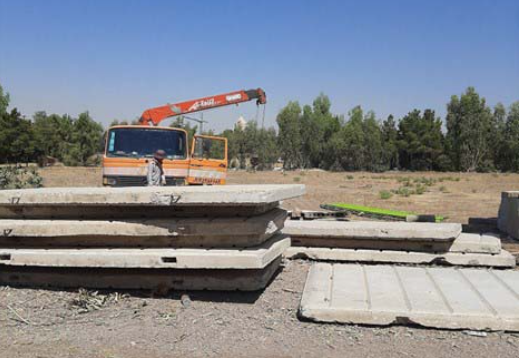June 17, 2022

The Islamic Republic is building a tall concrete wall around the Khavaran Cemetery where the Tehran victims of the regime’s 1988 mass executions of dissidents were buried.
It is also installing poles that appear to be intended to carry surveillance cameras so security officers can see who is visiting the cemetery and, presumably, punish them.
Videos and photos posted on social media in late May showed the wall going up and the poles.
Khavaran Cemetery is an irregular, unmarked cemetery located in southeast Tehran. The graves in the cemetery do not have any headstones or other markings. The Islamic Republic of Iran does not allow the families of the dead to mourn in the cemetery.
Khavaran originally was a traditional burial ground for religious minorities. During the 1988 executions of Iranian political prisoners, the government used Khavaran as the site of unmarked, mass graves for those killed. The portion of the cemetery in which the political prisoners are buried is colloquially known as lanatabad, place of the damned.
In a statement May 27, Justice Seekers of Khavaran, an organization of the families of the executed dissidents, called on the regime to stop the wall construction and announced they planned to launch an international campaign against the regime’s policy.
The number of persons killed nationally is unknown, with numbers estimated as high as 33,000. In 1990, Amnesty International estimated the toll as “at least 2,000.” Most were members of the Mojahedin-e Khalq, though a number of others were killed as well. All those executed had been jailed earlier by the courts for opposition activities. But none had been sentenced to die by the courts. Death panels at each prison decided who would die and who would live.
One member of the death panel for the Tehran prisons was Ebrahim Raisi, then the deputy prosecutor general and now the president.
The families of the purge victims were not told about Khavaran, but it did not take long for word to leak that Khavaran was their burial site.